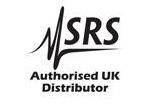Lambda Exclusive Promotion:
Additional 12 months warranty for free (2 years total) via our UK Service Centre.
The Stanford Research Systems FS730/FS735 Series Distribution Amplifiers are used to distribute a low noise 5 MHz frequency reference. Each system has one input and seven outputs, all on BNC connectors. The input is coupled through a series LC network allowing the use of inputs with a dc offset. The input source impedance is 50 Ω at 5 MHz.
The input is conditioned by a limiter. The limiter provides several advantages in this application, amplitude modulation is removed from the input signal, outputs have fixed amplitude, and input noise that occurs more than 50 mV away from the zero-crossing is blocked, and virtually any waveform with a duty cycle near 50% may be used as an input.
The input limiter is followed by a bandpass filter and a fixed gain amplifier. This signal is passed to the seven output amplifiers, each of which is followed by a low pass filter and an output transformer. All of the outputs have 50 Ω source impedance and provide a 1Vrms (+13 dBm) sine wave into a 50 Ω load.
There are four indicator LEDs. The “power” LED indicates that the unit has AC power. The “signal” LED indicates that an input signal is present. The “overload” LED indicates that the input signal has excessive amplitude. The “fault” LED indicates one or more of these conditions: no input signal, excessive input signal, no output signal, or low internal DC power supply.
Configuration
The FS73x series of products can be configured as half-width, 1U, benchtop instruments (FS730), or in full-width, 1U, 19" rack-mount enclosures (FS735).
The FS730/2 model provides 7 output BNC connectors on the front panel, and can be rack mounted with an optional rack mount kit.
The FS735/2/2 model provides 14 output BNC connectors on the rear panel, with status indicators on the front panel. Several types of distribution amplifiers are available as listed below. Different types may be combined within the FS735 chassis.
{/tabs}
| Input | |
| Frequency | 5 MHz, ±1 % |
| Level | 0 dBm to +16 dBm (0.6 Vpp to 4 Vpp) |
| Waveform | Any with ≈ 50 % duty |
| Impedance | 50 Ω, ±5 % at 5 MHz |
| Coupling | Series LC (Open at DC) |
| Output | |
| Waveform | Sine |
| THD | <1 td=""> |
| Level (50 Ω load) | +13±1 dBm (1 Vrms, 2.82 Vpp) |
| Level (high-Z load) | 2 Vrms (5.6 Vpp) |
| Impedance | 50 Ω, ±5 % at 5 MHz |
| Coupling | Transformer. (Short at DC) |
| Bandwidth | ± 100 kHz (-3 dB) |
| Spurious | <-120 dbc="" within="" 100="" khz="" td=""> |
| Isolation | >100 dB (1) |
| Pulling | <1 ps="" 1="" 2="" td=""> |
| TC of phase | ≈ -5 ps/°C |
| Additive phase noise | (with +7 dBm input) |
| Offset (Hz) | Noise (dBc/Hz) |
| 1 | -125 |
| 10 | -135 |
| 100 | -146 |
| 1k | -155 |
| 10k | -158 |
| 100k | -158 |
| General | |
| Power | 10 W, 100/120/220/240 VAC, 50/60 Hz |
| Dimensions | 8.3" × 1.5" × 8.0" (WHL) |
| Warranty | One year parts and labor on defects in materials and workmanship |
(1) Measured with 1 Vrms at 5.001 MHz from a 50 Ω source applied to an adjacent output. The isolation increases at frequencies far away from 5 MHz
(2) The pulling is comparable to that caused by a reflected wave from an unterminated cable on an adjacent output.
![]() Stanford Research Systems FS7300 Series datasheet
Stanford Research Systems FS7300 Series datasheet
![]() Stanford Research Systems FS7300 Series operation and service manual
Stanford Research Systems FS7300 Series operation and service manual
![]() Why buying from Lambda makes sense
Why buying from Lambda makes sense










